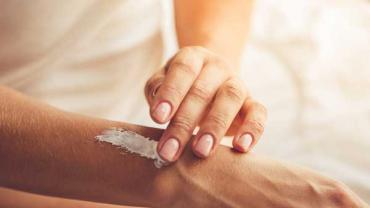
There are multiple factors involved in cutaneous senescence, the most common being photoaging caused by prolonged ultraviolet (UV) radiation exposure. However, more recently there has been increasing evidence indicating the critical role that glycation plays in skin aging. As the largest human organ, the skin is constantly bombarded with environmental stressors, so it makes sense that UV radiation is a predominant factor; however, it’s not the only one. In fact, many processes that occur internally play a significant role in external physiology, in other words, beauty comes from the inside.
Glycation refers to a spontaneous non-enzymatic reaction of free reducing sugar molecules, typically glucose or fructose, that are covalently bonded with free amino groups of proteins, nucleic acids, and/or lipids forming what is known as “Amadori products”. Excessive products become oxidized and dehydrated forming stable endogenous advanced glycation end products, or AGEs for short. AGE’s can also be formed exogenously through certain cooking methods, specifically, sugars cooked with proteins using dry heat for prolonged periods of time at high temperatures (e.g. roasting, grilling, and frying). A review of the glycation process showed that in mice fed an AGE-rich diet for 16 weeks had a 53% increase in serum levels of AGEs.
Glycation causes physical and functional changes in protein structures, leading to impaired elasticity of tissues such as the skin, blood vessels, and tendons. The cross-linking between AGEs with collagen of the vascular walls promotes plaque formation and hyperplasia. As researcher David Sinclair puts it we are "as old as our blood vessels." Much research, including a review published in the Journal of Exercise Nutrition & Biochemistry, AGEs are involved in generating reactive oxygen species (i.e. free radicals) leading to increased levels of oxidative stress which is implicated in the pathophysiology of various diseases and conditions, as well as aging.
While photoaging is a major component, lifestyle factors such as smoking, poor sleep, and a low-antioxidant diet are key players/triggers in the development of aging skin. Many consider aging a normal biological process that is inevitable as years pass; however, more research is being exposed that “aging” itself is a pathophysiological process and product of impaired biomechanics (e.g. poor functioning mitochondria due to hyperglycemia). The result of chronically high blood sugar levels, as seen in diabetic patients, is an increased production of AGEs that are intimately related to dermal damage via glycation, collagen fiber cross-linking, and changes in collagen type I and IV properties, causing loss of skin elasticity or “sugar sag.” According to a review on the role dietary changes play in treating major skin diseases, as blood glucose levels increase, so did the perceived age of the subjects studied. Thus, due to their detrimental effects on the properties of dermal and endothelial collagen, not only do AGEs cause internal damage, but also external damage as seen by the formation of dark spots, poor wound healing, as well as skin wrinkling and stiffness. Effects of increased AGEs are exacerbated by prolonged exposure to sunlight, smoking, oxidative stress, and hyperglycemic diets.
Supplemental collagen peptides as a functional food have been the latest rage in the health and wellness industry - as it should be. In clinical trials, oral collagen peptides are shown to improve hydration, elasticity, and wrinkling in human skin, among other positive outcomes, and may be an effective remedy for aging skin. An experimental study in the journal Nutrients found that fruit extracts from the plant Akebia quinata (or “chocolate vine” plant) ameliorates the effects of AGEs on skin aging by protecting against oxidative stress and inhibiting glycation activity. Another clinical trial in Clinical, Cosmetic and Investigational Dermatology found that a combination of collagen peptides and vitamin C, and extracts of Hibiscus sabdariffa (i.e. sorrel) and Aristotelia chilensis (maqui berry) significantly improved skin elasticity, firmness, and increased dermal thickness after 3 months of use.
Several reviews elucidate that there are various natural compounds, vitamins, and minerals that enhance skin health and can even alleviate certain skin disorders. Some of these include plant polyphenols, carotenoids, polyunsaturated fatty acids, co-Q10, colostrum, zinc, selenium, and astaxanthin among many others. Several plant compounds that play a protective role in UV-induced photoaging has recently emerged in science, including astaxanthin, green tea, specific melon juice concentrate high in superoxide dismutase, curcumin, and extracts from the leaves of a plant named Hydrangea serrata or "mountain hydrangea." All of these have been shown to some degree and by various mechanisms to attenuate UV-damage, inflammation, and aging of the skin.
Patients who are interested in skin health and anti-aging may benefit from following an anti-inflammatory, low-glycemic diet, high in antioxidants. Limiting consumption of pre-formed exogenous AGEs by cooking foods using water-based methods such as steaming, boiling, and sautéing at lower temperatures is recommended to reduce total AGE load. Consuming a diet low in sugar and grains, rich in plant-based whole foods is highly encouraged to avoid AGE formation. Patients should focus on a diet largely composed of non-starchy vegetables like leafy greens and colorful vegetables rich in flavonoids while mixing in high-quality plant and animal based proteins like wild-caught fish and shellfish, seeds, and legumes along with monounsaturated fatty acids such as avocado and olive oils.